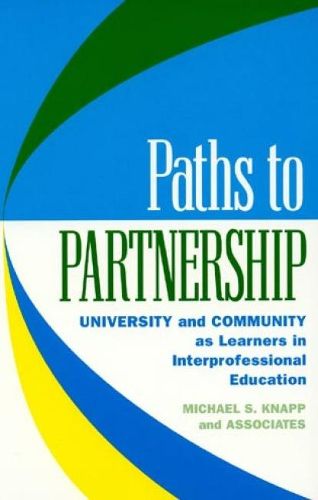Readings Newsletter
Become a Readings Member to make your shopping experience even easier.
Sign in or sign up for free!
You’re not far away from qualifying for FREE standard shipping within Australia
You’ve qualified for FREE standard shipping within Australia
The cart is loading…






The movement towards collaboration among human services professionals begs an important questions: how do we prepare professionals for such work? A growing number of universities are now trying to develop answers, and their answers increasingly emphasize interprofessional education, that is, programs that join the efforts of departments and training courses which have traditionally been separate. Furthermore, these programs tend to be based in community settings, and actively involved community members (practitioners, non-professional residents) as partners in the training process. In constructing such joint programs (or revising current programs within each profession to make them more interprofessional and community-based), educators and program designers are encountering a fascinating set of challenges as they construct interdisciplinary curricula, create learning experiences that necessitate real collaboration, and develop relationships with communities.
Paths to Partnership explores the nature of these challenges and how they can be approached. The authors_scholars and educators in five professional domains (education, nursing, social work, public health, and public policy and management)_joined forces in a five-year developmental effort at the University of Washington (UW) to create sustainable partnerships between university and community which will help newly entering professionals in the human services collaborate effectively with each other and with community members. One of the most advanced experiments of its kind in the country, the UW program provides a focal point for discussion of the various facets of interprofessional education. The book describes and analyzes this program, offers examples of several approaches to these issues, and examines the problems encountered in establishing successful interprofessional programs, in light of recent writing about interprofessional education and experiments now underway on dozens of other campuses across the country.
$9.00 standard shipping within Australia
FREE standard shipping within Australia for orders over $100.00
Express & International shipping calculated at checkout
The movement towards collaboration among human services professionals begs an important questions: how do we prepare professionals for such work? A growing number of universities are now trying to develop answers, and their answers increasingly emphasize interprofessional education, that is, programs that join the efforts of departments and training courses which have traditionally been separate. Furthermore, these programs tend to be based in community settings, and actively involved community members (practitioners, non-professional residents) as partners in the training process. In constructing such joint programs (or revising current programs within each profession to make them more interprofessional and community-based), educators and program designers are encountering a fascinating set of challenges as they construct interdisciplinary curricula, create learning experiences that necessitate real collaboration, and develop relationships with communities.
Paths to Partnership explores the nature of these challenges and how they can be approached. The authors_scholars and educators in five professional domains (education, nursing, social work, public health, and public policy and management)_joined forces in a five-year developmental effort at the University of Washington (UW) to create sustainable partnerships between university and community which will help newly entering professionals in the human services collaborate effectively with each other and with community members. One of the most advanced experiments of its kind in the country, the UW program provides a focal point for discussion of the various facets of interprofessional education. The book describes and analyzes this program, offers examples of several approaches to these issues, and examines the problems encountered in establishing successful interprofessional programs, in light of recent writing about interprofessional education and experiments now underway on dozens of other campuses across the country.